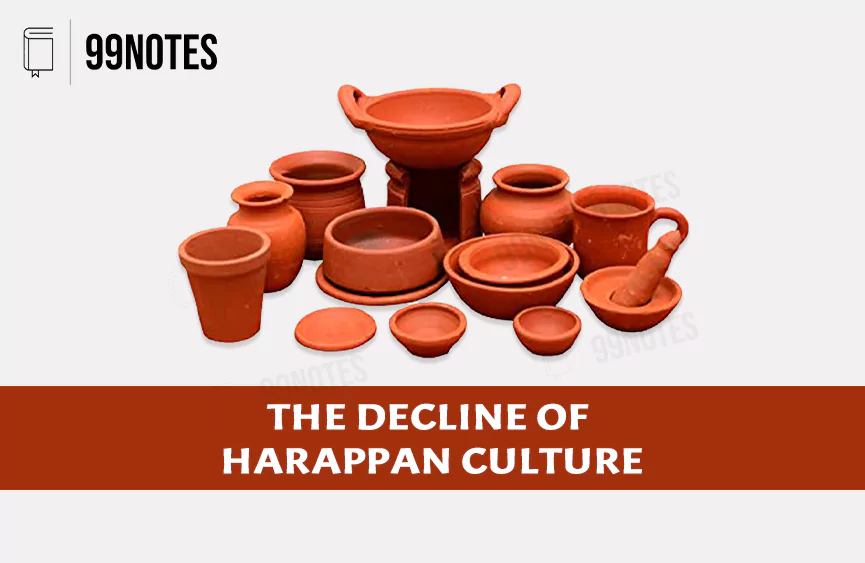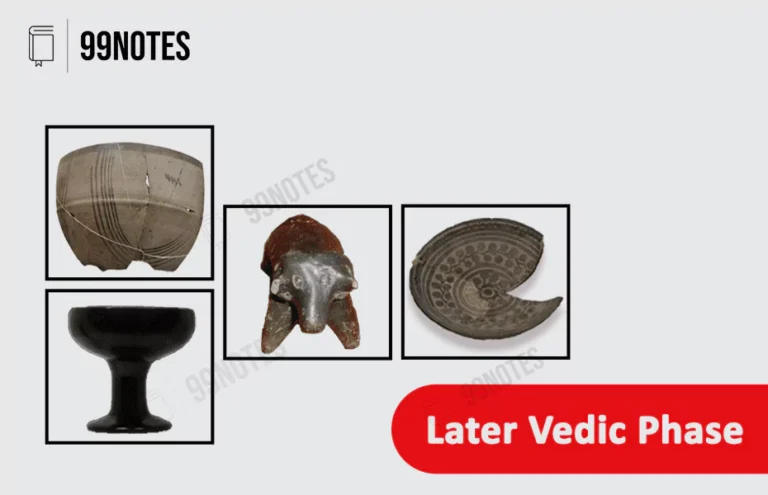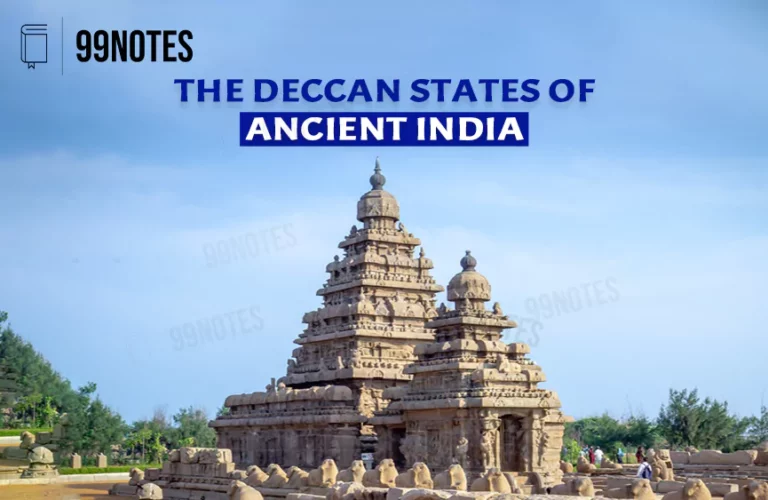Decline of Harappan Civilization- Complete Notes for UPSC IAS Exams
Around 1900BCE, cities like Harappa, Mohenjodaro and Kalibangan experienced a gradual decline. This era is referred to as the Late Harappan period and is divided into two phases – a Transitional Phase(1900-1700BCE) and a Cemetary H phase (1700-1300BCE).
Characteristics of its decline
- Urban planning and construction – In the later phase, we see the shoddy construction of new houses with old dilapidated bricks encroaching upon roads and streets.
- The appearance of slums & rural settlements: Rural settlements in areas such as Prabhas Patan (Somnath) and Rangpur increased.
- Significant buildings were neglected: ‘Great Bath’ and the ‘Granary’ fell into total disuse.
- Abandoning of sites: Harappa, Cholistan (abandoned in 1800BCE) and Mohenjo-Daro were abandoned altogether.
- Migration: There was an expansion of population into new settlements in Gujarat, Haryana & Western UP.
- Transformation of material life: Few Harappan sites that continued after 1900 BCE but with a decline in city life, with the disappearance of distinctive artefacts of the civilisation – weights, seals, and beads.
- Writing, long-distance trade, and craft specialisation also disappeared.
Reasons for the Decline
Scholars have given different reasons for the decline of civilisation. Some of the causes of the decline are –
- Climate change- a study of Mawmluh cave stalactite rock formation suggests that the Meghalayan age (from 2000BCE till 1950) started with a phase of 200-year drought. Due to this, many civilisations worldwide were affected, including Harappan. This could have triggered migrations all across the world.
- Flooding – The presence of silt clay on the streets of Mohenjo-Daro and a build-up on top of the debris of the older buildings suggests that there was flooding in the area. Scholars had suggested that a stage came when the impoverished population simply abandoned the settlement.
https://www.harappa.com/blog/mohenjo-daro-deep-soundings-and-flood-damage
- Change of the course of Indus – some believed that the river Indus could have changed its course over a period of time. This would have destroyed Mohenjodaro.
- Increased Aridity– For example, due to the drying up of the Ghaggar- Hakra river channel, the fertility of soils decreased, and the aridity increased.
- Unifying elements came to an end -The disappearance of seals, scripts, distinctive beads, pottery, and a shift from a standardised weight system to the use of local weights led to a decrease in the unity of Harappan culture.
- Aryan invasion theory- Wheeler suggested that Harappan culture was invaded by the Aryan race of people.
Aryan Invasion theory
Evidence in favour of Aryan Invasion –
- In the later phase, exotic tools and pottery shows that there was slow percolation of new peoples into the Indus basin.
- There are a few signs of insecurity and violence in the last phase of Mohanjo-Daro, hoards of jewellery buried at places and skulls huddled together in one place.
- Rigveda mentions a place called Hariyupiya where Aryans fought a battle. Some scholars suggest that Hariyupiya is Harappa.
Arguments against Aryan Invasion –
- The initial Aryan migration was in small numbers that were not enough to overwhelm Harappan cities.
- The difference in time – Aryans are believed to arrive in India not earlier than the period around 1500 BCE, and the decline of the Harappan civilisation started after 1900 BCE.
- Other theories are much stronger – The decline of Harappa was gradual and cannot be termed as a violent regime change.
Newer discoveries regarding the Indus valley civilisation:
Various new findings show a continuity in the Indus valley civilisation with the Vedic age. For example, while Kunal village shows continuity from the Neolithic era, the Rakhigarhi village continues into the Vedic period.
Kunal Village (Fatehabad, Haryana)
- It is a small 10-acre site on the Sarasvati-Ghaggar River system.
- The Archaeological excavations at this pre-Harappan site which is 8000 years old (C14 dates 5700-6000 B.C), started in the year 1986
- Indication of continuity between Harappa and Vedic culture: We find Hakra-ware (associated with Harappan culture), black-on-red ware (associated with Chalcolithic culture) as well as Painted Greyware (related to Vedic civilisation), all in one place, but at different levels of excavations. This reinforces the view that eastern sites followed a continuous evolution even when the western sites saw a decline.
- Major buildings/Artefacts discovered here.
- Buildings/Constructions: From pit dwellings (Neolithic culture) to that, square and rectangular mud-brick houses (Bronze Age) have come to light. A copper furnace and steatite bead-making workshop has also been found.
- Terracotta artefacts: cakes of terracotta, beads, bangles, gamesmen and animal figurines have been found.
- Jewellery/ornaments: Steatite beads, Semi-precious stone beads, copper objects and other antiquities, gold beads of a necklace, an armlet and a few bangles pieces.
- Other finds: Many pit activities at the site and the bones of the mammals such as antelopes, gazelle and Nilgai, mostly charred. This hints at some kind of ritual to sacrifice animals too.
- Long-distance trade is suggested through the discovery of Marine shells (the nearest possible source can only be the Arabian sea).
Birhana Village (Fatehabad, Haryana)
- It is situated in the Sarasvati-Ghaggar River system. It is the oldest Harappan Civilisation site, dating back to 7570-6200 BCE.
- Major buildings/Artefacts discovered here.
- Buildings/Constructions: Multi-roomed houses made of mud bricks (sun-baked bricks) and wide straight roads were found separating the houses.
- Sculptures: A dancing girl (replica of “Dancing Girl” from Mohenjo-Daro) engraved on a potsherd as graffiti. Terracotta wheels with painted spokes
- Seals: seals stamps
- Jewellery/ornaments: bangles of copper and terracotta; semi-precious stones and beads, beads of steatite, faience, terracotta and shell etc
- Other finds: pottery, fabrics, copper chisels, arrowheads, and spearheads. Charred grains of wheat and barley, A circular structure of baked earth (like a tandoor)
Conclusion: The disappearance of the Harappan civilisation occurred gradually, and in many places, it continued even after the disappearance of significant sites. This makes the Aryan invasion a doubtful theory. Most scholars have long rejected this theory in favour of a more believable Aryan Migration theory and consider climate change as a common reason for both the migration of the Aryans and the decline of civilisation.





![Sangam Age: Literature, Map, &Amp; Dynasties [Upsc Exam Notes] | Updated July 26, 2024 Sangam Age: Literature, Map, &Amp; Dynasties [Upsc Exam Notes]](https://99notes.in/wp-content/uploads/2023/04/megalith-sangam-age-99notes-upsc-768x495.webp)
